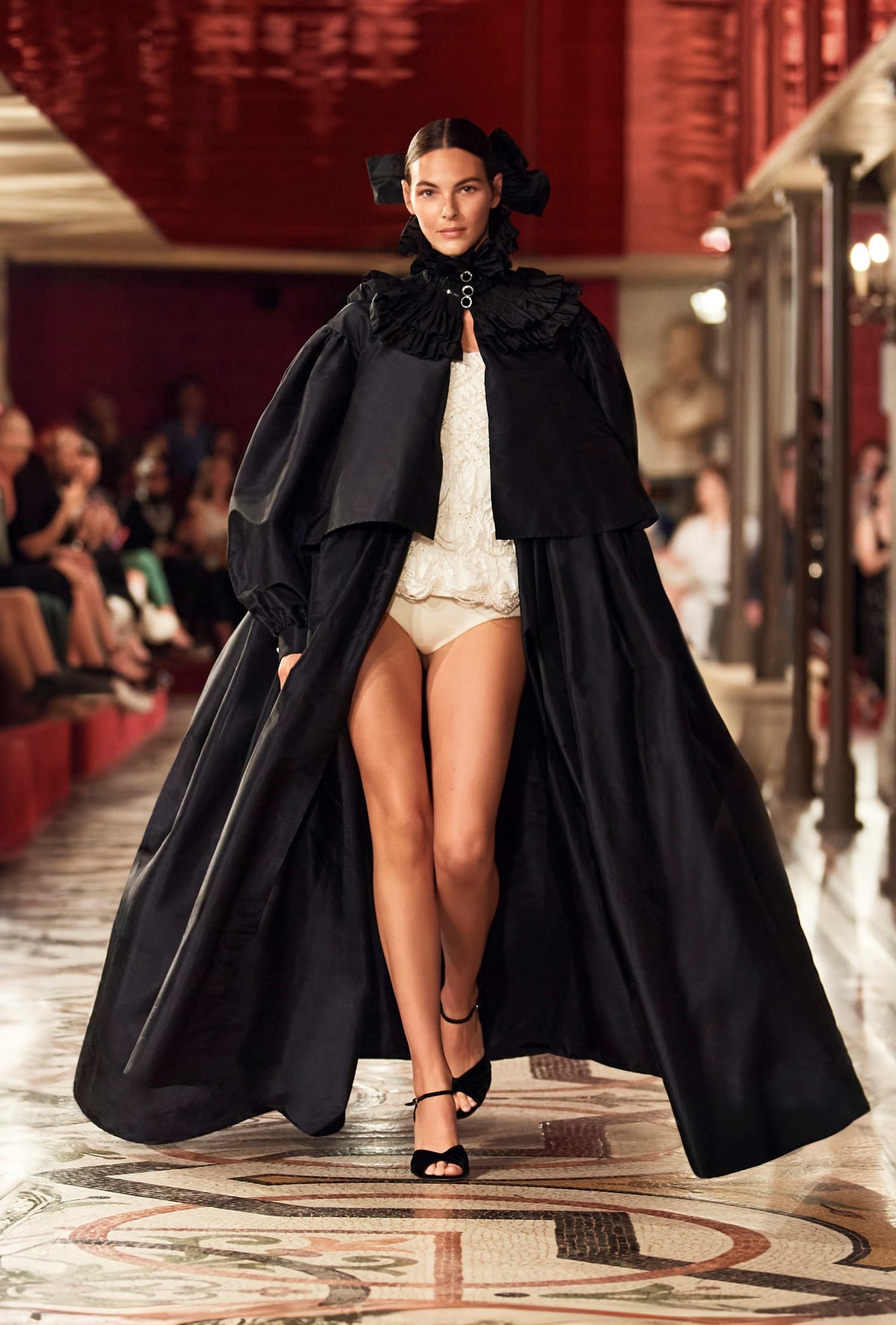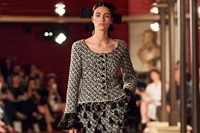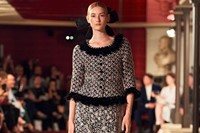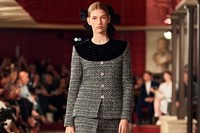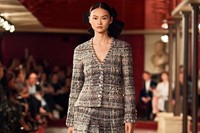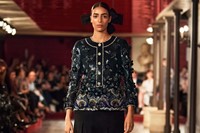In the 18th and 19th century, the opera was less about the event itself than your attendance; it was an arena to see and be seen, where opera glasses were regularly trained on the audience more than they were on the performance. Which has an analogy with a fashion show in the 21st century, truth be told – those screaming hordes outside most seem to care about everything but the clothes, which are the point of the whole thing in the first place.
Anyway, for Autumn/Winter 2024 Chanel staged its haute couture collection at the Palais Garnier, the florid Napoleon III opera house whose architecture represents, it’s fair to say, the very antithesis of Gabrielle Chanel’s characteristic modernism. That said, Chanel herself indulged an operatic side: in the 1930s, she created romantic styles that nodded to the rococo artist Jean-Antoine Watteau with frilled collars and spreading skirts, and she worked with Jean Cocteau on costumes for his productions of Antigone, Orpheus and Oedipus Rex. So to underscore a seemingly paradoxical sense of theatre and intimacy, the house collaborated with French director Christophe Honoré to erect a set that recreated plush red opera boxes, huddling the audience close to the clothes under a reflective ceiling of matching deep crimson. It all added up to an alternative stage on which couture could perform.

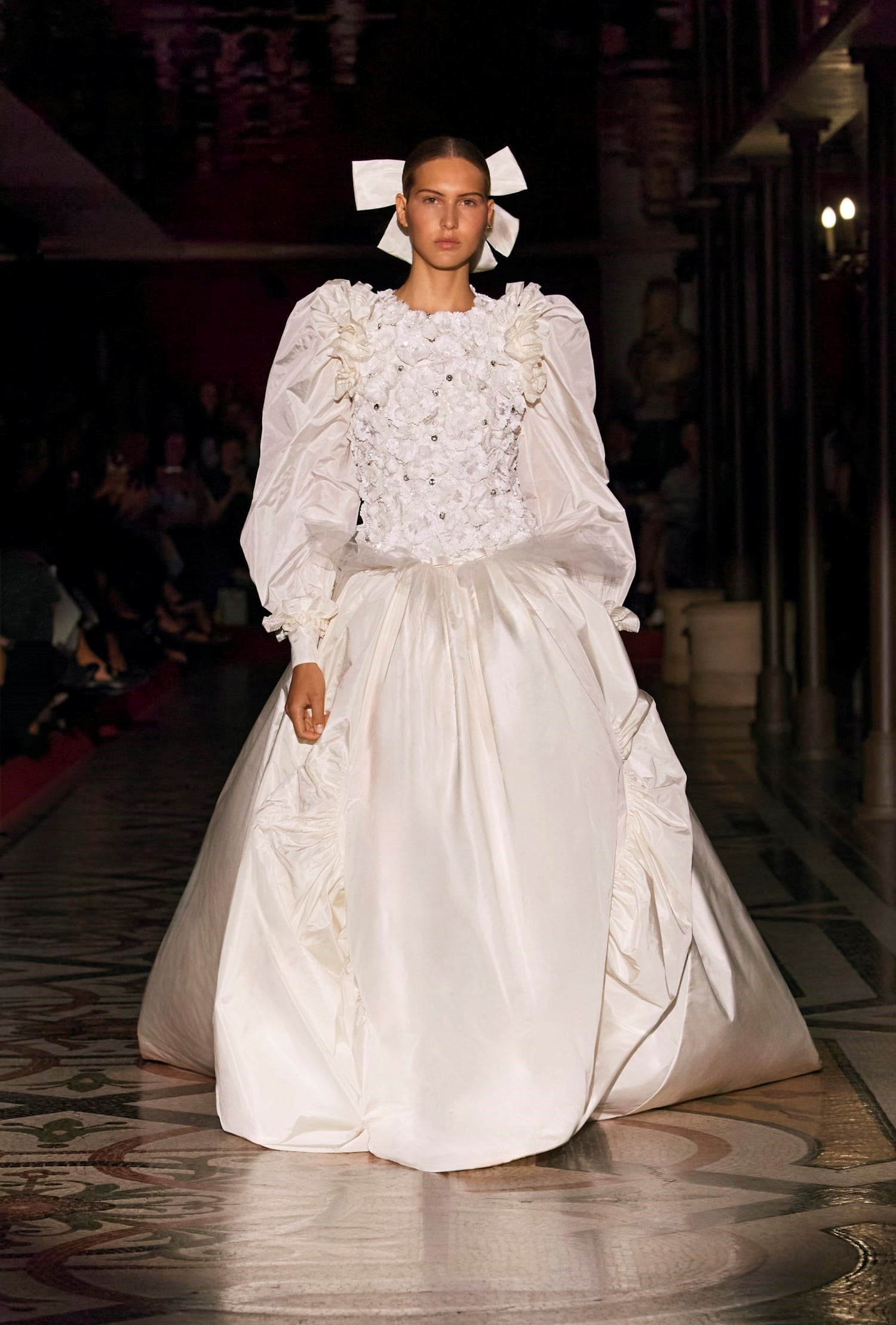
The performance here did not come courtesy of a designer – Chanel’s artistic director Virginie Viard exited the house earlier this month, while this collection was still in progress. No designer was named, and no-one took a bow at the end of this show. Rather, this collection was about putting the house and its ateliers centre stage. It was, after all, the first Chanel haute couture show to be staged without a creative lead since the death of Gabrielle Chanel in 1971: Chanel died 16 days before her final show was presented, where the models all wore black ribbons in their hair as a mark of mourning. There had been no death here, rather an amicable parting of ways, hence the mood was one of occasion and, to a degree, a celebration of the workmanship and artistry of the Chanel ateliers, the possibilities of haute couture. For its couture operation, Chanel employs 150 specialist craftspeople across six ateliers, so it’s no slouch. And while wild theatrics aren’t Chanel’s vibe, there was a sense of pageantry here, a notion of dressing up.
If Chanel was showcased in the opera there was nevertheless nothing costume about the proposals. Even the billowing cape that opened the show had a sense of reality to it, in featherweight taffeta worn over briefs. That said, the opera gave new inflections to classic Chanel tweed suits in rich imperial purple, flecked with gold or embedded with gemstones. Jackets were cut like brief doublets, nods to the attire of ballet danseurs – the Palais Garnier is the home of the Ballet de l’Opéra, of which Chanel is a patron. And eveningwear was dreamlike, dresses for balls and grand soiree in spangled tulles that, again, threw back to Chanel’s own fairytale confections of the 1930s, nods to romance in a moment when the world was in turmoil. The wedding dress, too, gave in to the spirit – you could see the shadows of some of Karl Lagerfeld’s more opulent moments, and nods to the extravagance of the time of the Garnier’s conception in the 1860s, when crinoline skirts meant marble staircases and porticoes spread to gargantuan proportions.
Chanel was responsible for wiping out many of the lingering styles of that century, for encouraging women to throw off corsets and shorten their skirts in manners that would render the clothes that populated the Palais Garnier for over half a century entirely obsolete within a few years. And yet haute couture remains steeped in the unique cultural fusion of 19th-century Paris, and its emblem – the sophisticated, elusive and mysterious Parisienne – finds her 20th-century incarnation in Chanel herself, one so potent it still lingers over the house that bears her name. Doubtless, that will further serve to inspire whomsoever inherits her legacy next. But, for this outing, the house as a collective proved it could more than pay lip service to Gabrielle Chanel’s style, identity and ideology. There is plenty to dress clients with here, until Chanel’s next act begins – namely, when its new principal is appointed.
